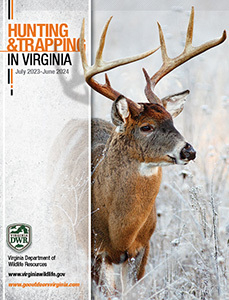Director’s Message

The Hunting & Trapping in Virginia regulations book, like our previous publications and those of other state fish and wildlife agencies across the country, is a collection of the rules that govern the pursuits that we all hold in the highest regard and that help accomplish wildlife management goals across the Commonwealth. Those rules are based in science, help us achieve population and other objectives, and promote good sportsmanship and the preservation of opportunities for generations to come.
State fish and wildlife agencies are more than just scientific management agencies, however. They are public agencies. We exist to serve the public and carry out your direction. The same can be said for our hunting and trapping regulations. All of the goals that they seek to accomplish are formed with public input, and in many cases are based upon values of the public. Our decisions are formed through public input processes, and many species are managed according to objectives established in long-term management plans developed through stakeholder processes. Having a career in this field, I can look at many aspects of our regulations structure and tell you what is sought to be achieved and the various viewpoints from all sides that had to be reconciled to arrive at an agreed resolution. Most often, multiple points of view bring valid considerations.
All of this depends on public participation, as does the future of our sports and our resources here in the Commonwealth. Job demands and busy social schedules often leave us struggling to find the time we’d like to have to make it into the field, let alone spend time reading regulatory proposals or volunteering time to efforts or organizations that benefit sportsmen and women. But those efforts are critical to our wildlife, to our experiences, and to the experiences of those to come in the future.
As always, this year I will encourage you to make the time to participate in your passions in the field, but I’ll also encourage you to be intentional to make the time to participate for the benefit of your sport during the rest of the year, whether that takes the form of engagement with agency processes, membership or volunteering with any of the many organizations that surround hunting and trapping in Virginia, or even just time spent helping the non-hunting community understand the benefits of our wildlife conservation system. You can make a difference.
Ryan Brown, Executive Director, DWR

